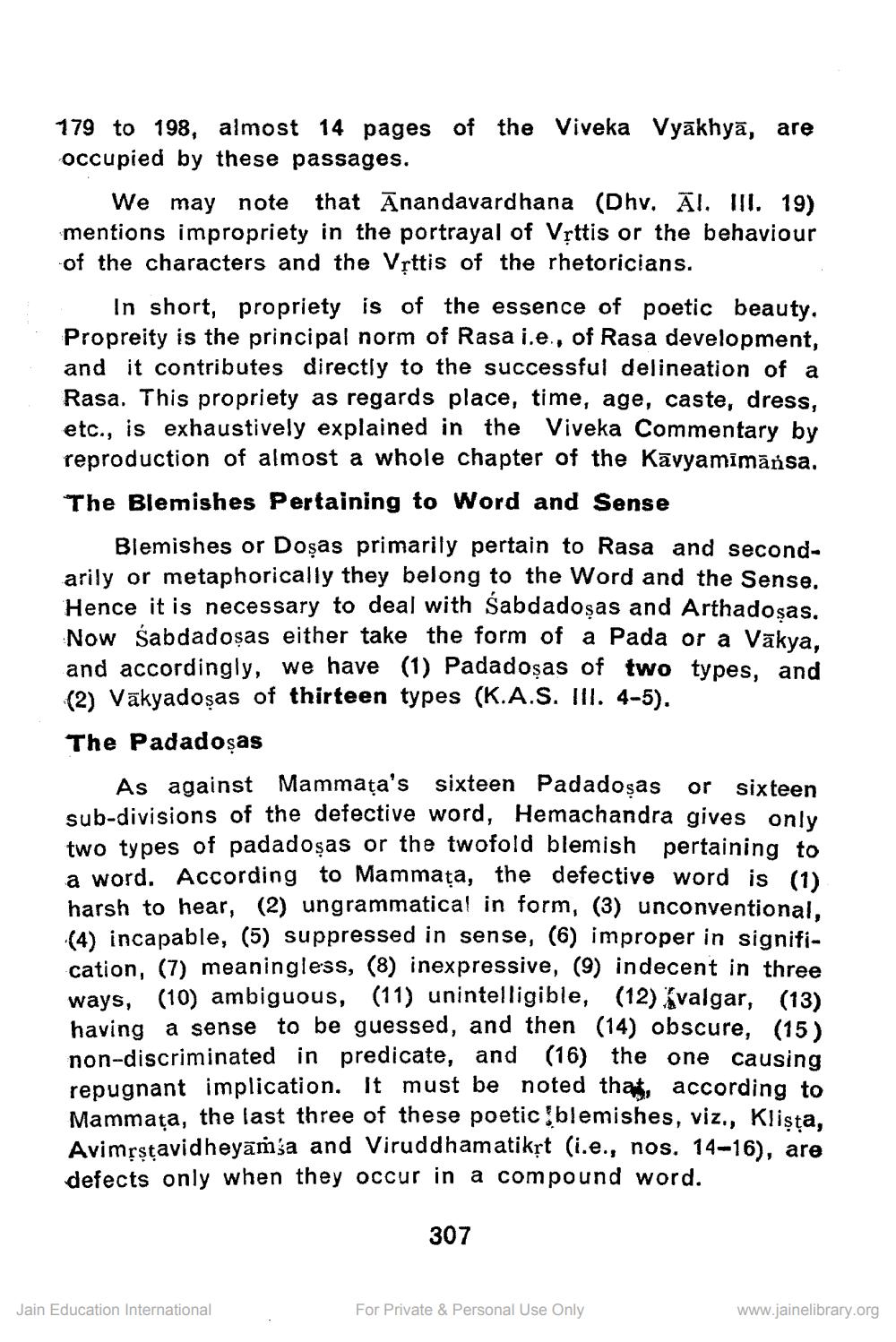________________
179 to 198, almost 14 pages of the Viveka Vyakhyā, are occupied by these passages.
We may note that Ānandavardhana (Dhv. Al. III. 19) mentions impropriety in the portrayal of Vșttis or the behaviour of the characters and the Vșttis of the rhetoricians.
In short, propriety is of the essence of poetic beauty, Propreity is the principal norm of Rasa i.e., of Rasa development, and it contributes directly to the successful delineation of a Rasa. This propriety as regards place, time, age, caste, dress, etc., is exhaustively explained in the Viveka Commentary by reproduction of almost a whole chapter of the Kāvyamīmānsa. The Blemishes Pertaining to Word and Sense
Blemishes or Doșas primarily pertain to Rasa and secondarily or metaphorically they belong to the Word and the Sense. Hence it is necessary to deal with Sabdadosas and Arthadosas. Now sabdadoșas either take the form of a Pada or a Vākya, and accordingly, we have (1) Padadoșas of two types, and (2) Vakyadoșas of thirteen types (K.A.S. III. 4-5). The Padadosas
As against Mammața's sixteen Padadosas or sixteen sub-divisions of the defective word, Hemachandra gives only two types of padadosas or the twofold blemish pertaining to a word. According to Mammața, the defective word is (1) harsh to hear, (2) ungrammatical in form, (3) unconventional, (4) incapable, (5) suppressed in sense, (6) improper in signification, (7) meaningless, (8) inexpressive, (9) indecent in three ways, (10) ambiguous, (11) unintelligible, (12) Kvalgar, (13) having a sense to be guessed, and then (14) obscure, (15) non-discriminated in predicate, and (16) the one causing repugnant implication. It must be noted that, according to Mammata, the last three of these poetic!blemishes, viz., Klista, Avimrstavidheyāmja and Viruddhamatikșt (i.e., nos. 14-16), are defects only when they occur in a compound word.
307
Jain Education International
For Private & Personal Use Only
www.jainelibrary.org




